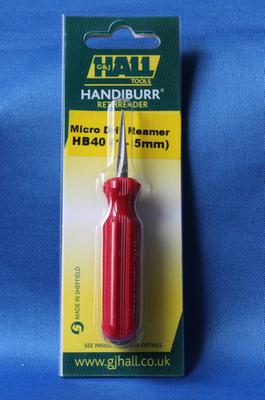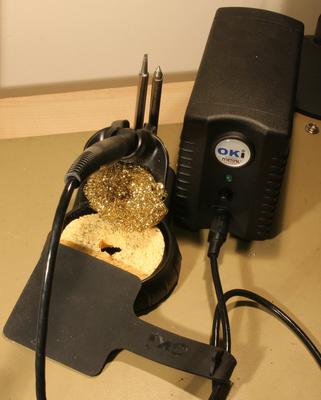Stripboard Circuit Construction
Last updated: 21 May 2014 - 21:59
Before cheap prototype PCB services like OSHPark, Ragworm and iTeadStudio options for building circuits for prototype or hobby projects were much more limited. You could etch your own board, carve a board out of copper clad with an abrasive tool, wire-wrap it all or use stripboard.
Stripboard, sometimes known as Vero-board (after a popular manufacturer) is a kind of circuit board, usually a cheap substrate like SRBP, with long strips of copper about 2mm wide running the length of the board. Holes are typically punched on a 0.1" (2.54mm) grid across the board, making it easy to fit traditional through-hole components.
The basic technique of construction is to use a small drill type tool, known as a spot-face cutter, to cut the long traces to make separate parts of the circuit. Wires are run, perpendicular to the copper tracks to create links in the opposite direction, allowing complex circuits to be built up.
Tools: Mini Reamer
Last updated: 10 May 2014 - 12:50
Stripboard construction and home-made PCBs are going out of fashion these days, but for the odd power supply or prototype they're still often worth doing. One of the most annoying problems I regularly face when building things (especially power supplies) on stripboard is components with leads too big to fit. Most cheap stripboard tends to use punched holes between 0.8 and 1.0mm in diameter (about 40 thou). With power-handling components particularly leads can be 1.0mm or even bigger, and they just won't push through the board. Opening out holes with a craft knife can be tricky, and having a range of tiny drill bits can be costly (especially as they're really easy to snap). The best solution is a mini reamer.
OKI Metcal PS-900 Soldering Iron Review
Last updated: 28 Aug 2012 - 13:41
Having a really good soldering iron can really affect the range of parts you can use in projects and the time it takes you to do things. I've been using a Weller TCP iron that was originally owned by Tektronics for many years and it has been a great tool (and still is!) but upgrading this to lead free can be pricey and the temperature control in these old mechanical irons can make switching from soldering pads connected to hairline tracks to pads connected to ground planes a little dangerous for the components. I had a couple of bits of 0.5mm pitch soldering to do, so before I got started I decided to get a new lead-free compatible iron. After some research I settled on the OKI PS-900 soldering station.

